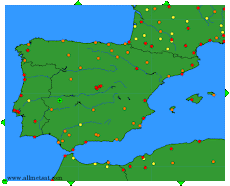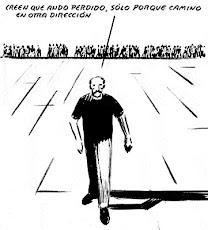miércoles, 24 de julio de 2013
UNEXPECTED EVENTS TRAINING: A SKYBRARY ARTICLE
Adjuntamos artículo de SKYbrary sobre el entrenamiento y formación de pilotos y tripulaciones para aprender a reaccionar y actuar ante sucesos imprevistos.
Se trata de procedimientos de fácil aprendizaje que tienen como objetivo que la reacción reflejo ante un imprevisto sea adecuada y lo más certera para evitar los posibles riesgos de una acción errónea o demasiado tardía. Actuar correctamente sin necesidad de pensar. Haciendo una analogía, en el entrenamiento de la defensa personal se practica hasta la saciedad qué hacer en caso de agresión hasta integrar la respuesta óptima en la reacción primaria o reflejo ante una situación imprevista. No se trata de analizar la situación, buscar la mejor solución y aplicarla, sino en actuar y anular el intento de agresión de una manera efectiva y contundente.
Estas técnicas, heurísticas o reglas de oro (rules of thumb en inglés) están basadas en la experiencia y en cómo reaccionamos ante un imprevisto; por ejemplo, ante una caída colocamos las manos para evitar daños en la cabeza, aunque no siempre es la mejor opción por el riesgo de dañar gravemente las muñecas, una articulación muy delicada; sin embargo con un entrenamiento concienzudo podemos aprender a caer y reducir el riesgo de roturas, como hacen en determinadas artes marciales.
Se trata de técnicas sencillas basadas en la experiencia y el comportamiento humano primario que inciden en la inmediata reacción ante un suceso imprevisto.
Unexpected Events Training (OGHFA BN)
Source: www.skybrary.aero
Categories: Organizational influences
Introduction
This briefing note provides a prescriptive outline that identifies human factors practices and practical techniques to be integrated into advanced aeronautical training programs. The integration of these rules of thumb can help optimize responses to unexpected events and upset-recovery training for individual pilots and for flight crews. Ineffectively managed surprises, which often accompany unexpected airborne events, can otherwise exacerbate problems. A number of training strategies can help mitigate risk exposure by fostering adaptability and resiliency in the aviator.
Applying practical techniques and integrating human factors principles into the training syllabus allows evaluators to expand typical performance measures (e.g., time and proficiency scores) to include “soft evaluations” that account for individual reactions. These expanded criteria can more inclusively measure and manage how pilots improve during training and recover from a variety of upsets.
Definitions
Unexpected or surprising event:
• An event incongruent with expectations as determined by base rate probabilities — that is, the average probability of the event occurring — and the contextual information available surrounding the event; it may be normal, abnormal or emergency in nature; it may also be frequent, infrequent or novel, or,
• the absence of an expected event.
In aviation, surprise often results when something that is expected to happen, in fact, does not. This creates a twofold problem: First, if the expectation is great enough, one may “see” or “hear” what is expected, even if it is not there. For example, many pilots in “gear-up” accidents claim the gear-down-and-locked indicator lights were illuminated and the gear warning horn was not on. In some cases, the area microphone for the cockpit voice recorder clearly recorded the gear warning horn.
In the other case, if a pilot does not know what to expect in a situation, then informational cues may be ignored or a large number will be viewed as unexpected. This potentially creates distractions to, and interruptions of, the primary task of flying the aircraft.
Surprising situations can include:
• System malfunctions
• Weather or environmental threats
• Crew member incapacitation
• Loss of Situational Awareness
• Air traffic control (ATC) or other crew member communications problems
• Aerodynamic anomalies
Aircraft upset or loss of control
Unexpected events and their associated factors contribute to loss of control.
Upsets include: unintentional aircraft pitch attitudes greater than 25 degrees nose-up or 10 degrees nose-down; bank angles greater than 45 degrees; airspeeds inappropriate for the conditions of flight; or any other aircraft state that is not intended by the pilot.
Unexpectedness and the associated pilots’ reactions to an upset are major contributors to loss of control in flight, the largest category of fatal commercial air carrier accidents between 1994 and 2003 (Boeing Commercial Airplanes, 2004).
Aircraft upsets occur for a variety of reasons. The following list of causes was compiled from the Airplane Upset Recovery Training Aid, developed by the aviation industry and the U.S. Federal Aviation Administration (FAA):
• Environmentally induced upsets
• Systems failure induced upsets
• Pilot induced upsets
Data
Factors commonly associated with unexpected and surprising events
A review of 638 accidents and incidents shows the following factors to be frequently involved in surprising and unexpected events:
Factor and percent present: Aircraft Position: 55.8; Air Traffic Control: 51.1; Other Crewmember Actions: 42.3; Aircraft State: 31.7; System Status: 19.3; Automation: 14.9; In-Flight Turbulence: 11.5; Low Visibility: 10.0.
Elements Involved in Surprise
Surprise is governed by four principles:
• Surprise can be insidious (gradually and subtly causing harm).
• Surprise can be subliminal (not conscious).
• Surprising events are typically common, trivial and mundane.
• More often than not, there are cues available to suggest that the unexpected should have been expected.
The process of surprise
A person’s reaction to a surprising or unexpected event may contribute to an interruption of his or her ongoing thought processes and motor activities, thus creating an error chain.
External behaviour:
• The first sign of imbalance creeps in as a decrease in accuracy. For example, discrepancies appear between targeted headings and altitudes, and those actually flown.
• Second, the aviator may become increasingly distracted by the worsening developments, thus neglecting to monitor the automation or cross-check instruments.
• In extreme cases, panic may set in. The aviator may even lapse into a state of resignation due to not knowing what action to take next.
Consequences of expected and unexpected events
Events in the cockpit, good or bad, that affect the equilibrium of the person, the system or the situation can be considered stressors.
• Psycho-physical stress: Aviators should strive for optimal stress/arousal levels — too little (complacency) or too much (overload) leads to poor performance.
• Psycho-emotional stress: Strive for a measured emotional response. Do not completely ignore your own senses or internal dialogue. Be sensitive to visceral reactions and the “hair standing up on the back of your neck.”
Behavioural responses
Regardless of the nature of the event or perceived severity, pilots respond in one of two ways:
1. Focus on the unexpected situation, address the condition and return to pre-event duties; or,
2. Focus on the unexpected situation and fixate on one aspect, without returning to the ongoing activities in a timely manner.
Fixation is particularly detrimental because the ongoing task of flying the aircraft must be attended to continuously. Otherwise, the following tasks may be neglected:
• Aircraft handling
• Monitoring
• Procedures
• Communication
Combating Unexpectedness
Flight instruction and training
Flight instructors must recognize what is happening internally with students and either reinforce positive reaction strategies and attitudes, or identify where restricted thinking exists in order to optimize the students’ capabilities. Flight instruction should emphasize the following:
• Realistic scenario-based training.
• Recognizing and responding to ill-defined events.
• The inability to train for all possible surprising situations.
• Integration of thinking skills and emotional control, with the requisite “stick-and-rudder” skills necessary to successfully perceive, process and respond to any unexpected situation.
• If necessary, use maximum available flight control inputs and power. Employ alternate control strategies as required.
• Modify know procedures to novel situations.
Mental processes for maintaining situational awareness
The following mental processes should be considered during training and continuously revisited during flight operations:
• Reflexive — The reflexive process is purely instinctive, involving automatic reactions learned by the pilot.
• Reflective — The reflective process is a conscious, systematic thought process aimed at problem solving.
• Repeated reviewing — The repeated reviewing process involves intelligence gathering in which the pilot looks for changes in the flight environment that might affect the safety of the flight.
Improving judgement
Poor planning leads to poor judgement. Lack of familiarity with the airplane, the flight environment, operating procedures, the route of flight and the destination airport can contribute to bad decisions.
• By deliberately seeking all available information in flight and during preflight planning, potential surprises may be discovered and remedied before they lead to unmanageable unexpected events.
• Continually evaluate the unfolding situation by consciously thinking and communicating about the condition of the environment, the aircraft, the pilots and the interactions occurring. Practice monitoring thoughts and actions by asking, “What am I focusing on now; what is the state of the situation (e.g., aircraft attitude, flight path, altitude, velocity)?”
• Continuously ask, “What if?” What should be done in the event of a flight control malfunction? What should be done during a dual engine failure? What if …?
Airmanship attitude
• Maintain cognitive flexibility, which is keeping an open mind to alternatives and possibilities at all times. Approach flying with an appropriate attitude (mental, physical and social) so that when you are faced with a surprising event, solutions become more apparent. Being cognitively flexible helps to counteract fixation tendencies and enhances your ability to handle unexpected events.
Example Scenarios
These scenarios may not, at first glance, seem to be so unexpected. However, research has demonstrated that these seemingly everyday occurrences indeed contribute to unwanted situations and outcomes. Most aviators have had experiences in similar situations.
A. Takeoff clearance
A takeoff clearance while holding for departure usually would not be regarded as surprising. However, as the following report to the U.S. National Aeronautics and Space Administration Aviation Safety Reporting System (ASRS) illustrates, given the right circumstances, even the ordinary may turn into a surprising event.
The controller advised us to be ready to go. We acknowledged OK. And then, there was about a three-minute break in the arriving traffic. Nothing happened. No takeoff clearance. We were spring-loaded to go and then nothing happened. Finally, out of the clouds pops another aircraft on final. As I watched him get closer, I realized that we weren’t going to be released. I relaxed, my copilot relaxed. Big mistake. Tower cleared us for an immediate takeoff. You can’t even begin to imagine our total surprise. Both crew and engines weren’t spooled up to go. As we were turning the corner for a rolling takeoff, tower comes back and asks if we are rolling! As soon as we replied affirmative, the controller sent the arriving aircraft around. The controller wasn’t happy, the arrival wasn’t happy, and I wasn’t happy. (ASRS report no. 598909)
• What the crew was thinking: The crew convinced themselves that an immediate takeoff was unlikely. They were “surprised” by the takeoff clearance and rushed into a potentially dangerous departure.
• What the crew may have considered: The controller advised the crew to be ready for takeoff. The crew should have either been prepared for an immediate departure, or they should have elected to decline the takeoff clearance, given what they knew.
B. Runway change
Another event reported as creating surprise in pilots is issuance of a runway change. Once again, this is a fairly common event that can indeed result in a poor process (e.g., approach) and/or a poor outcome (e.g., landing). The following is an example:
A crew has briefed the approach and landing to Runway 25R at a major airport configured with two sets of parallel runways. It is a clear night and the runways are clearly visible. Approximately seven miles from the runway, at approximately 2,000 feet AGL [above ground level], air traffic control requests that the flight change to Runway 25L and issues clearance to land on 25L.
• What most crews do: The majority of pilots comply with such a request. However, problems are created by a surprising request, even when it happens frequently at certain airports.
• What many crews do not consider: The controller requested the runway change, but there is always the option to decline and accept the possible consequences (including a go-around). The programming of the automation and flight management system (FMS) may be such that there will be no go-around guidance for the “new” runway. There may be additional notices to airmen (NOTAMs) such as taxiway closures that may affect the flight landing on the “new” runway.
Here’s another example:
The flight is approaching the airport from the north, and the crew has prepared to land to the north. When the flight is approximately seven miles north of the airport, air traffic control “offers” the flight the option to land to the south.
• What most crews do: The majority of pilots accept the challenge and attempt to take air traffic up on the offer. Why not? They will land sooner and not have to fly all the way around the airport to land.
• What many crews do not consider: In this case, the problems begin to multiply. There is no mandate to accept the runway change, only the opportunity to “help out” the controller or accept the challenge of “going down and slowing down” in short order. Once again, there is always the option to decline and continue with the original plan. The programming of the automation and the FMS may be such that there will be no go-around guidance for the “new” runway. There may be additional NOTAMs, such as taxiway closures, that may affect the flight landing on the “new” runway. In addition, accepting the closer runway may result in an unstabilized approach. Many pilot reports indicate they were surprised that the approach and/or landing resulted in an unwanted outcome after accepting such an offer from ATC.
• What crews may want to consider: Pilots need to remember how we tend to fixate on a surprising event (e.g., an offer to change runways) and may fail to consider all of the factors surrounding the event. Can the approach still be accomplished within the parameters of a stabilized approach? If the airplane is high and fast, how fast is too fast? If it looks questionable whether the approach and landing to the closer runway can be accomplished with the same, or better, margin of safety, what are the alternatives? How “tight” is too tight for an approach? What are the risks and what are the benefits of accepting the closer runway? Does the crew even have time to evaluate the risks and rewards?
Surprise and unexpected events alter the decision-making process and may influence how a situation is perceived. Pilots should take extra care in situations where the element of surprise may play a part in the process of the flight.
Key Points
• There are many types of surprising events in aviation. Potentially any event or combination of events can produce a situation that can result in an unwanted outcome.
• Unexpectedness and the pilots’ associated reaction to it are major contributors to loss of control in flight.
• By deliberately seeking all available information in flight and during preflight planning, potential surprises may be discovered and remedied before they become debilitating unexpected events.
• Flight training should integrate mental skills and emotion management, with the requisite stick-and-rudder skills necessary to successfully perceive, process and respond to any unexpected situation.
Associated OGHFA Material, additional reading material and related articles, were not included but are available in the SKYbrary article.
El Aeropuerto de Madrid-Barajas presenta un escenario de riesgos tan amplio que la formación de pilotos y tripulaciones antes situaciones de riesgo imprevistas es una necesidad que las compañías aéreas no pueden ni deben obviar. Por supuesto no seguir en ningún caso las recomendaciones de los gestores de AENA y los ideólogos, diseñadores y ejecutores de la ampliación del aeropuerto, que tienen ocurrencias como ésta:
Mientras no se implante una operación segura en el aeródromo madrileño, saber cómo reaccionar ante los riesgos a los que se enfrentan pilotos y tripulaciones puede ser la garantía de un vuelo con final feliz.
Suscribirse a:
Comentarios (Atom)




















